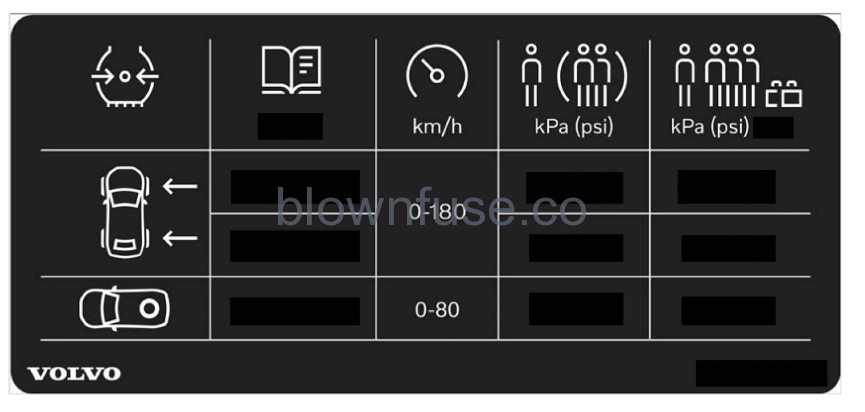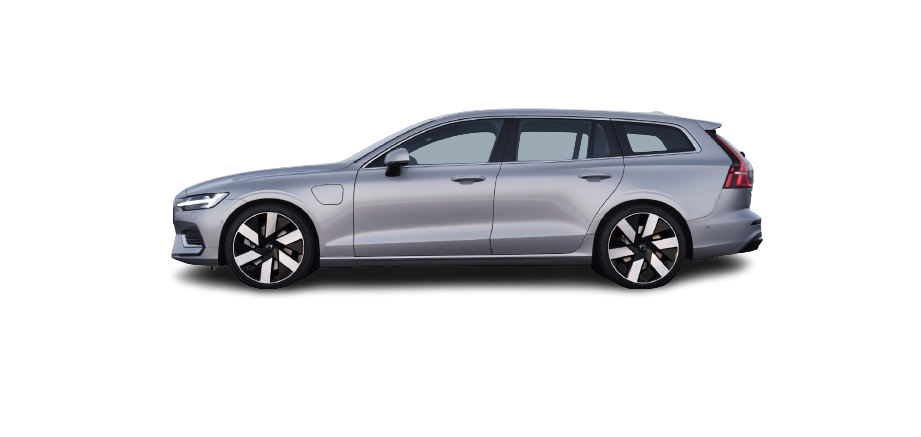2023 Volvo V60 Tyre pressure

Checking tyre pressure
Tyre pressure decreases over time, this is a natural phenomenon. Tyre pressure also varies depending on ambient temperature. Driving on tyres with tyre pressure that is too low could result in the tyres overheating and being damaged. Tyre pressure affects travelling comfort, road noise and driving characteristics.
Check the tyre pressures monthly. Use the recommended tyre pressure for cold tyres in order to maintain good tyre performance. Tyre pressure that is too low or too high may cause uneven wear on the tyres.
- Under-inflation is the most common cause of tyre failure. This may result in severe tyre cracking, tread separation, or “blow-out”, with reduced control of the vehicle, which may lead to increased risk of injury.
- Tyres with pressure that is too low reduce the load capacity of the car.
After having driven approximately 1.6 km (1 mile) these tyres are considered as warm. If you have to drive further than this to inflate the tyres, first check and record the tyre pressure. Then inflate to a suitable tyre pressure when you arrive at the pump.
When the outside temperature changes, the tyre pressure also changes. A decrease in temperature of 10 degrees causes the tyre pressure to decrease 7 kPa (1 psi). Check the tyre pressure regularly and adjust to the correct pressure, which is specified on the car’s tyre information decal or certification label.
If you check the tyre pressure when the tyres are warm then you must never release any air. The tyres are warm due to driving and it is normal for the pressure to increase above the recommended pressure for cold tyres. A warm tyre with tyre pressure equal to or below the recommendation for cold tyres may have a pressure that is far too low.
Adjusting tyre pressure
Use the recommended tyre pressure for cold tyres in order to maintain good tyre performance and even tread wear.
- Remove the cap from the valve on one tyre and then press down the tyre pressure gauge firmly onto the valve.
- Inflate the tyres to the correct pressure, see the decal on the door pillar on the driver’s side showing the recommended pressure for factory-fitted tyres.
- Refit the dust cap.
Note
- After a tyre has been inflated, always refit the dust cap in order to avoid damage to the valve from gravel, dirt, etc.
- Only use plastic dust caps. Metal dust caps can rust and become difficult to unscrew.
Check the tyres visually for any implanted nails or other objects that could puncture the tyre and cause leakage.
Check the sidewalls for any cavities, cuts, bumps or other irregularities.
Repeat this for all tyres, including the spare tyre(Option/accessory).
Some spare tyres require a higher tyre pressure than other tyres. Check in the tyre pressure table or on the tyre pressure label.
Location of tyre pressure label

Tyre pressure label
The decal displays the designation for the factory-fitted tyres on the car, as well as load limits and tyre pressure.

